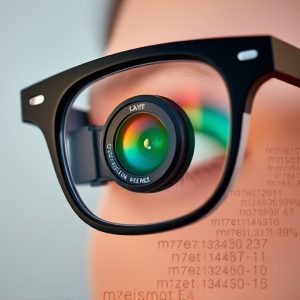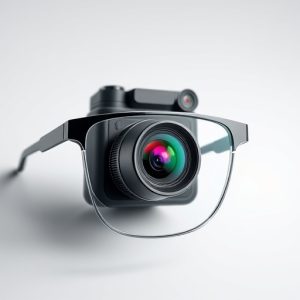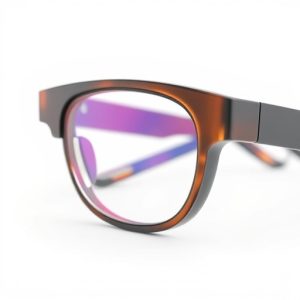Glasses with Camera Built In: Shaping Future Visual Capture
Glasses with integrated cameras represent a significant leap forward in wearable technology, offerin…….
Glasses with integrated cameras represent a significant leap forward in wearable technology, offering hands-free video recording, photography, and live streaming. This innovative concept benefits various sectors from entertainment to healthcare and security. While enhancing accessibility for the visually impaired, it raises privacy concerns that require robust data protection measures. With advancements like AI object recognition and improved battery life, these "glasses with a camera built-in" promise to revolutionize daily interactions, creativity, and social connection.
Glasses with a camera built-in are no longer a futuristic concept but an emerging reality, redefining the way we capture moments. In this article, we explore the glasses with a camera built-in phenomenon, delving into their technology, benefits, and potential privacy implications. From revolutionizing personal photography to enhancing professional applications, smart glasses equipped with cameras are set to shape our everyday lives. We analyze current trends and predict future prospects, providing an in-depth look at this glasses with a camera built-in revolution.
Understanding Glasses with a Camera Built-In: A New Era of Visual Capture
Glasses with a camera built-in represent a significant leap forward in wearable technology, ushering in a new era of visual capture and interaction. These innovative devices seamlessly integrate high-quality cameras into their frames, enabling users to record videos, take photos, and even stream live content hands-free. The concept is not merely about capturing moments but also about enhancing daily experiences, from documenting travel adventures to conducting business meetings remotely.
With the rise of glasses featuring integrated cameras, we’re witnessing a paradigm shift in how we interact with our surroundings. This technology promises improved accessibility for individuals with visual impairments, enhanced security and surveillance capabilities, and new creative avenues for content creation. Moreover, its potential applications span various industries, from entertainment and sports to healthcare and education, marking the beginning of an exciting journey in wearable tech innovation.
The Technology Behind: How Cameras Fit into Smart Glasses
The technology behind smart glasses with integrated cameras has evolved significantly, transforming how we interact with our surroundings. These innovative devices pack advanced optical and digital components into a lightweight, wearable form factor. Cameras in smart glasses can capture both still images and videos, often with high-resolution capabilities, thanks to miniaturized sensors and efficient image processing algorithms. The camera lenses are carefully designed to ensure clear and sharp visuals, even in diverse lighting conditions.
Building a camera into glasses presents unique challenges, such as ensuring minimal impact on wearability and maintaining optical quality. Engineers address these issues through innovative design and material choices, often employing flexible and transparent components to create a seamless integration. Additionally, audio capabilities are seamlessly incorporated, allowing for hands-free communication and the capture of ambient sounds, enhancing the overall functionality of glasses with a camera built-in.
Benefits and Use Cases: Revolutionizing Personal and Professional Photography
Glasses with a camera built-in are set to revolutionize personal and professional photography. These innovative devices offer numerous benefits, such as hands-free operation, discreet capture of high-quality images and videos, and enhanced mobility. For professionals, this technology can transform everyday tasks into efficient, documented experiences—from architectural site visits to on-site interviews. It enables users to quickly capture and share pivotal moments without compromising quality or convenience.
In personal settings, glasses with a camera built-in open up new avenues for storytelling and self-expression. They allow users to document their daily lives, travel adventures, and significant events from unique perspectives, eliminating the need for bulky equipment. This technology promises to capture not just what’s seen but also the wearer’s emotional state and immediate surroundings, creating more immersive and compelling content.
Privacy Concerns: Balancing Innovation with Security
The rise of smart glasses equipped with cameras and audio capabilities presents an exciting technological advancement, offering new ways to interact and document our surroundings. However, this innovation also raises significant privacy concerns. As wearers capture and potentially share intimate moments or sensitive information through these devices, ensuring data security and user consent becomes paramount. The small size of the built-in camera lenses on glasses can make it easier for individuals to record without others realizing, leading to a loss of personal privacy.
Addressing these privacy issues requires a collaborative effort from manufacturers, regulators, and users. Encryption methods and secure data storage can help protect sensitive footage. Transparent policies regarding data collection and usage are essential to ensuring user trust. Additionally, wearers should be educated on their rights and the potential implications of sharing content captured by these glasses with a camera built-in, fostering a culture of responsible technology adoption.
Future Prospects: Trends and Potential Impact on Everyday Life
The integration of cameras and audio into everyday eyewear, such as glasses with a camera built-in, opens up exciting possibilities for the future. As technology continues to advance, we can expect these smart glasses to become more sophisticated, offering enhanced functionality that seamlessly blends visual and auditory experiences. The potential impact on our daily lives is profound; from capturing memorable moments and enhancing communication to enabling new forms of remote collaboration and entertainment.
Trends suggest that future models may include advanced AI capabilities for object recognition, improved video quality, and longer battery life. These innovations could make glasses with cameras even more immersive and user-friendly. In everyday scenarios, this technology might revolutionize the way we interact with our surroundings, providing a new perspective on documentation, creativity, and social connection.


